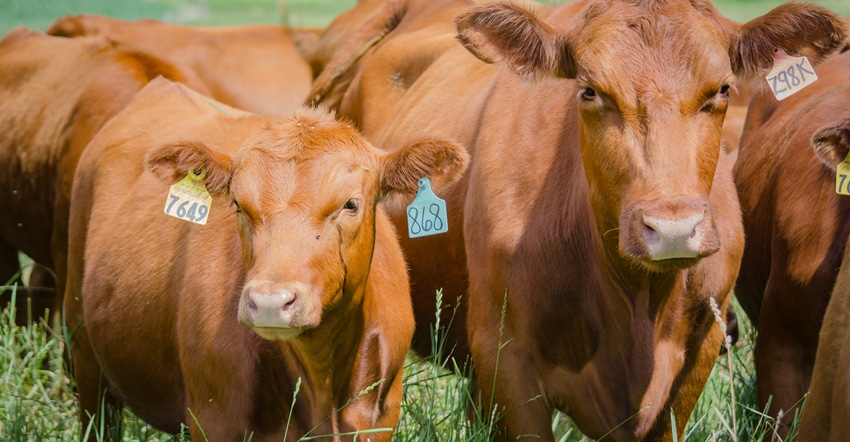
The beef cattle industry in Minnesota contributes nearly $5 billion to the state’s economy, according to a recent economic analysis conducted by University of Minnesota Extension.
The study also found that the beef industry directly employs an estimated 30,000 part- and full-time workers, in addition to its support of 16,900 jobs in nondirect industries.
“The overall economic impact of beef has not been calculated before. What we found is that with beef raised at just over 16,000 operations, the industry contributions are significant,” says Brigid Tuck, Extension senior economics analyst. She studied data from 2015, including information from USDA as well as a survey of 400 beef farmers across the state.
Among the findings:
• Beef accounts for 24% of the state’s livestock cash receipts. Receipts by other animals were hogs, 33%; dairy, 21%; poultry and eggs, 17%; and others, 2%.
• Beef cow-calf operators reported spending an average of $62,600 on operations. Feed-related expenses account for 72% of their costs. On average, each operator spent an estimated $44,600 on feed, with hay being the largest purchase.
• Ninety-four percent of beef producers' expenditures were made in Minnesota. Of that number, nearly three-quarters of the expenditures were local, defined as sourced within 30 miles of the farm.
• Fifty-seven percent of surveyed feedlot operators either expanded (42%), upgraded (31%) or built a new facility (27%) within the last decade. On average, each feedlot operator invested $24,900 in the project, increasing the capacity of the feedlot by 33 head.
• Just over half of the surveyed feedlot operators plan to remain at their current size over the next five years. Slightly more than a third plan to grow larger. The size of the operation did not appear to factor into whether or not to expand.
The Minnesota Beef Council contracted Extension to analyze the industry’s impact. Karin Schaefer, the council's executive director, says the analysis should help consumers grasp the breadth of agriculture’s impact on the state.
“An in-depth analysis like this sheds light on what an industry means in the places they’re located,” Schaefer says. “For the beef industry, knowing that most of the money associated with raising beef stays local underscores how important we are to communities.”
The report noted that Minnesota’s beef industry is significant in size and scope, with more than 16,000 beef operations. In 2015, the state was home to 350,000 beef cows that had calved. In addition, the state had 385,000 cattle on feed or animals fed for future processing.
Every county in the state is affected by the beef industry, and nearly every county is home to a cow-calf operation, study authors noted. Certain parts of the state have higher concentrations of cow-calf operations, including the central and southeast regions, and each is home to some form of beef production.
See the 29-page analysis, U-M Extension's Economic Contribution of Minnesota's Beef Industry, online
Source: U-M Extension
About the Author(s)
You May Also Like






